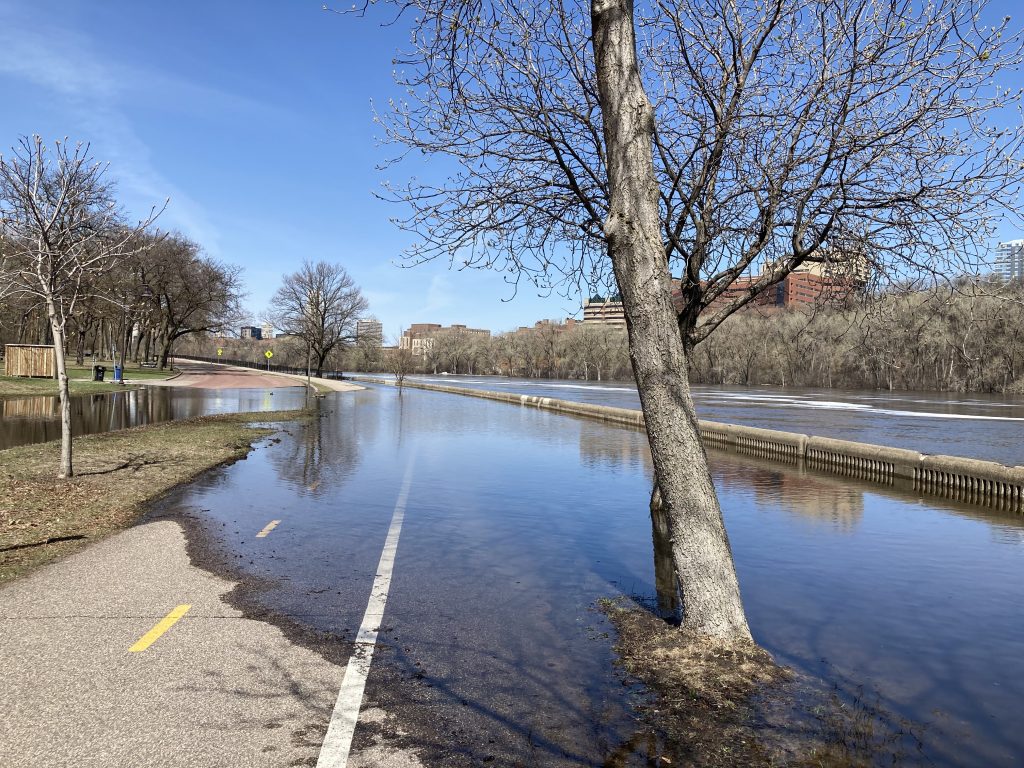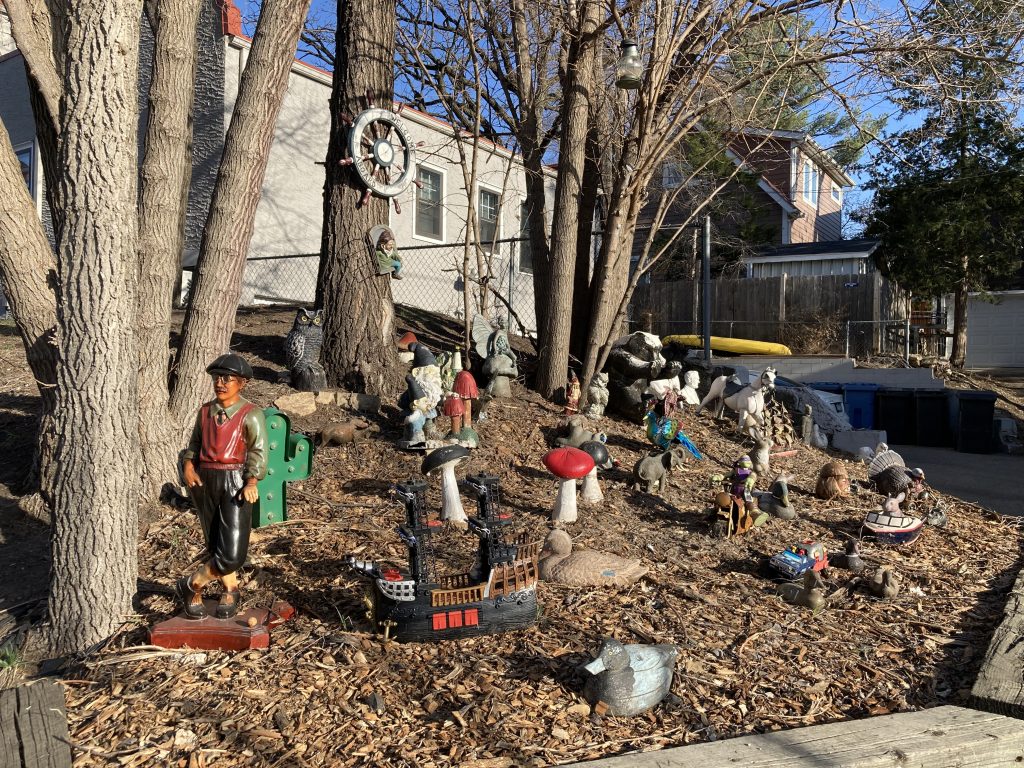6 miles
ford loop
40 degrees
Hooray for sun and low wind and clear paths! Ran the entire food loop without stopping to walk. My legs were sore by the end but mostly, I felt good. Ran past all the orange “road closed” signs for the Get in Gear this weekend. Scott and I were considering signing up for it, but he’s not trained up enough yet and I’m not that big into races anymore. Too many people, packed too tightly. Plus, they’re expensive. Greeted Dave, the Daily Walker at the beginning of the run and a few other walkers and runners along the route.
10 Things I Noticed
- the river is still high, but not as much fast moving foam. On the lake street bridge, it was a contemplative blue with swirls of something just under the surface — or were they on the surface — reflected clouds?
- sometimes it was sunny, sometimes it wasn’t. didn’t see my shadow
- also, didn’t hear the bells over at St. Thomas
- checked my watch: from the bottom of the hill, just off the steps of the lake street bridge, to the top, right by the entrance to the shadow falls trail, is .65 miles
- one goose, flying low and honking awkwardly
- encountered 3 or 4 runners on the east side of the river
- a loud leaf blower below me, on the locks and dam #1 trail
- water — some gushing, some trickling out of sewer pipes and limestone, some traveling through the ravine and down to the river
- heard the loud knocking of a woodpecker down in the gorge
- overheard: one woman walker talking to another: we were in Norway without a hotel. I was on the phone for 3 hours… [laughter]
Tried to read the last few sections of A. R. Ammons’ garbage, but can’t seem to do it. Too many words. Instead, I found myself (how? I can’t remember now) reading through some of Dan Beachy-Quick’s poems and thinking, not for the first time, that he writes a lot about eyes and blindness and (not) seeing. Is he writing from experience, or is it all a convenient metaphor? A google search of his name and “eyes” or “vision problems” or “blindness” has yielded no useful results.
This Nest, Swift Passerine / Dan Beachy-Quick
But how find how as it flew onward
& the mountains gave back the sound
to say what I mean the call of the bird
& the echoe after to say I’ve seen?
Raven hungers and calls and the mountain
Hungers back and calls
The whole range of peaks in the bird’s beak.
Raven lonely and the mountain rings
Loneliness & the echoe after we could see
him no longer
The echo after we could see Light in echo the eye sees
also through the ear a double infinity
The italicized line in the first stanza is a reference to a journal entry from Dorothy Wordsworth that William used in a poem.
I like the last line, the eye sees also through the ear

